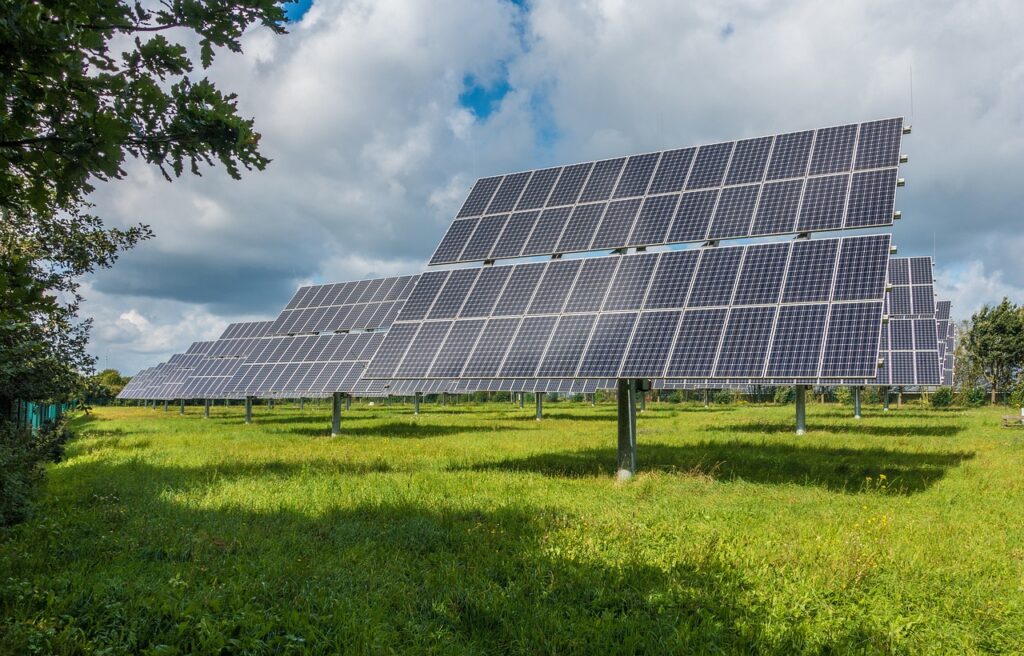February 1, 2025 Pooran Chandra Pandey
India is a world leader in solar power for agriculture. According to the International Renewable Energy Agency, India has 93 percent of the world’s off-grid capacity deployed for agricultural use.
Srinivas Bhaskar Karanki and Satish D. Dhandole of the Indian Institute of Technology Bhubaneswar led the development of a mobile solar pumping system in India. The system can be moved from one farm to another and is useful for pumping water in remote areas. The system includes solar panels and an inverter to power a surface-mounted pump. It can generate enough power to operate submersible and mono-block-pump AC motors.
India has almost 17.5 lakh sq km of arable land, the highest in the world. The majority of the land in India is irrigated using 30 million groundwater pumps, out of which 20 million pumps are connected to the grid, 10 million are run on diesel, and a nominal number of 3.9 million pumps are run using solar energy. These pumps have been deployed in the last five years. Only a handful of states, including Chhattisgarh, Rajasthan, Andhra Pradesh, Uttar Pradesh, Haryana, and Bihar, have implemented these solar-powered pumps for irrigation.
The adoption of solar-powered irrigation not only helps reduce the burden of over Rs 1 lakh crore towards electricity subsidies for agriculture but also reduces oil import bills by reducing diesel consumption by 1.38 billion liters per annum, as per the current government estimates.
The total consumption of diesel by pumps in the country in a year comes to 5.52 billion liters per annum, an equivalent to CO2 emissions of 15.4 million tonnes. Overall, the government aims to reduce these pumps’ carbon emissions by 32 million tonnes through solarised irrigation. Furthermore, it is estimated that off-grid solarisation of pumps can help reduce transmission and distribution losses by up to 20 percent, according to a World Irrigation Forum (WIF) report.
Mobile solar pumps are a cost-effective and sustainable solution for water supply. They can be more economical than diesel or electric pumps of similar capacity. For example, the cost of diesel to run a 3–5 HP diesel pump for a year is often more than the cost of the pump itself.
The government of India and some subregions offer subsidies for installing mobile solar water pumps. The Ministry of New and Renewable Energy (MNRE) provides a 30 percent subsidy for farmers and 50 percent for vulnerable and financially disadvantaged farmers. Solar pumps can also last between 10 and 20 years.
There also are many advantages of using solar-powered pumps for farmers. Besides offering a reliable energy source to farmers, solar pumps offer a cost-effective and environment-friendly alternative for irrigation. Moreover, they benefit the country’s remote areas where electricity is still a privilege to the farmers.
A recent study by the ICA (International Copper Association-India) and IIEC (International Institute of Energy Conservation) in Haryana and Chhattisgarh revealed that solar pumps reduce farmers’ daily workload, improve farming productivity, and increase average income. The study also revealed that 36 percent of the farmers in Chhattisgarh and 14 percent in Haryana reported an increase of 50 percent in their annual incomes, and 82 percent of the farmers confirmed that their earnings have increased by 25 percent after installing solar water pumps.
One major threat to the agriculture sector in India is the overexploitation of groundwater. Despite the advancement of technologies, most farmers in India rely on rainfall to cultivate their lands. However, farmers need a robust and reliable irrigation system due to rainfall uncertainty in many parts of the country. Additionally, electric pumps do not have a fixed time. Therefore, the electric supply and pumps are switched on throughout the day to compensate for erratic power supply.
As a result, groundwater is overused and exploited. Other factors, such as a lack of storage facilities, growing demand vis-à-vis population, and water contamination, have led to the need for better and optimal groundwater use. At this juncture, India needs a sustainable solution to ensure a clean and green water supply.
Under the PM-KSY scheme, the government aims to incentivize farmers and provide financial support for properly using solar water pumps. Moreover, by using micro irrigation, farmers can save 20-48 percent of irrigation water, 28.5 percent of fertilizers, and 30.5 percent of energy, thereby improving the overall efficiency of agricultural practices.





